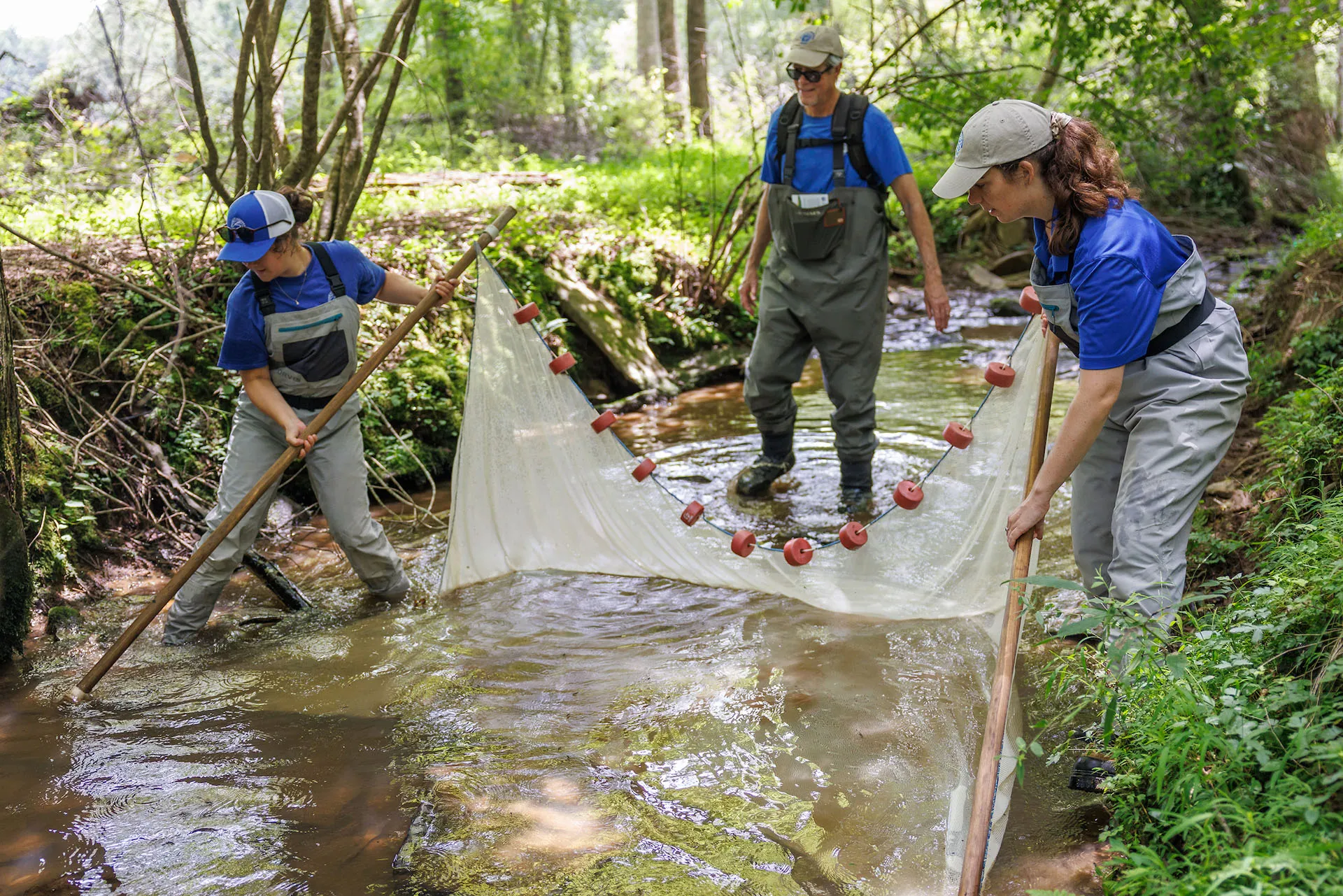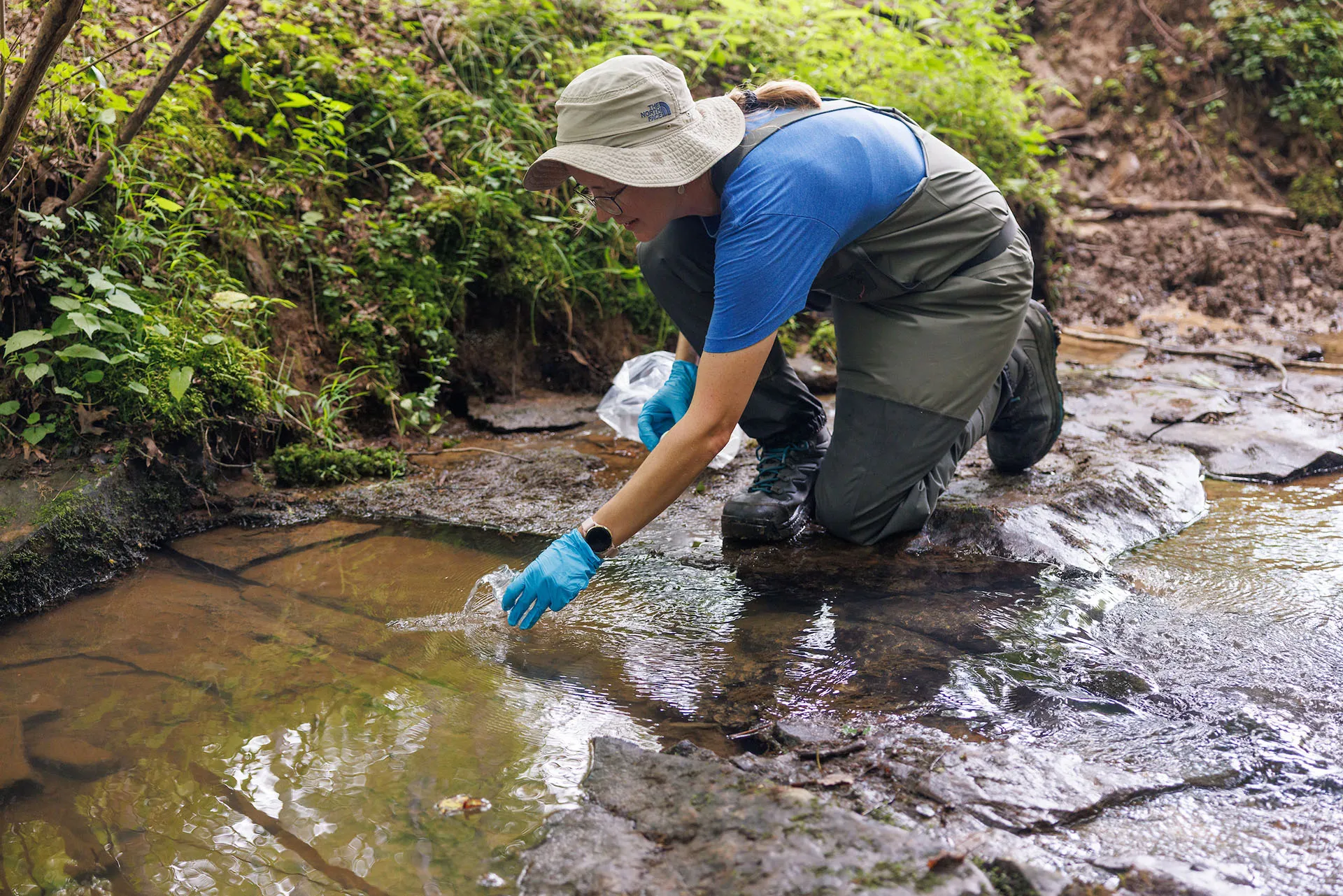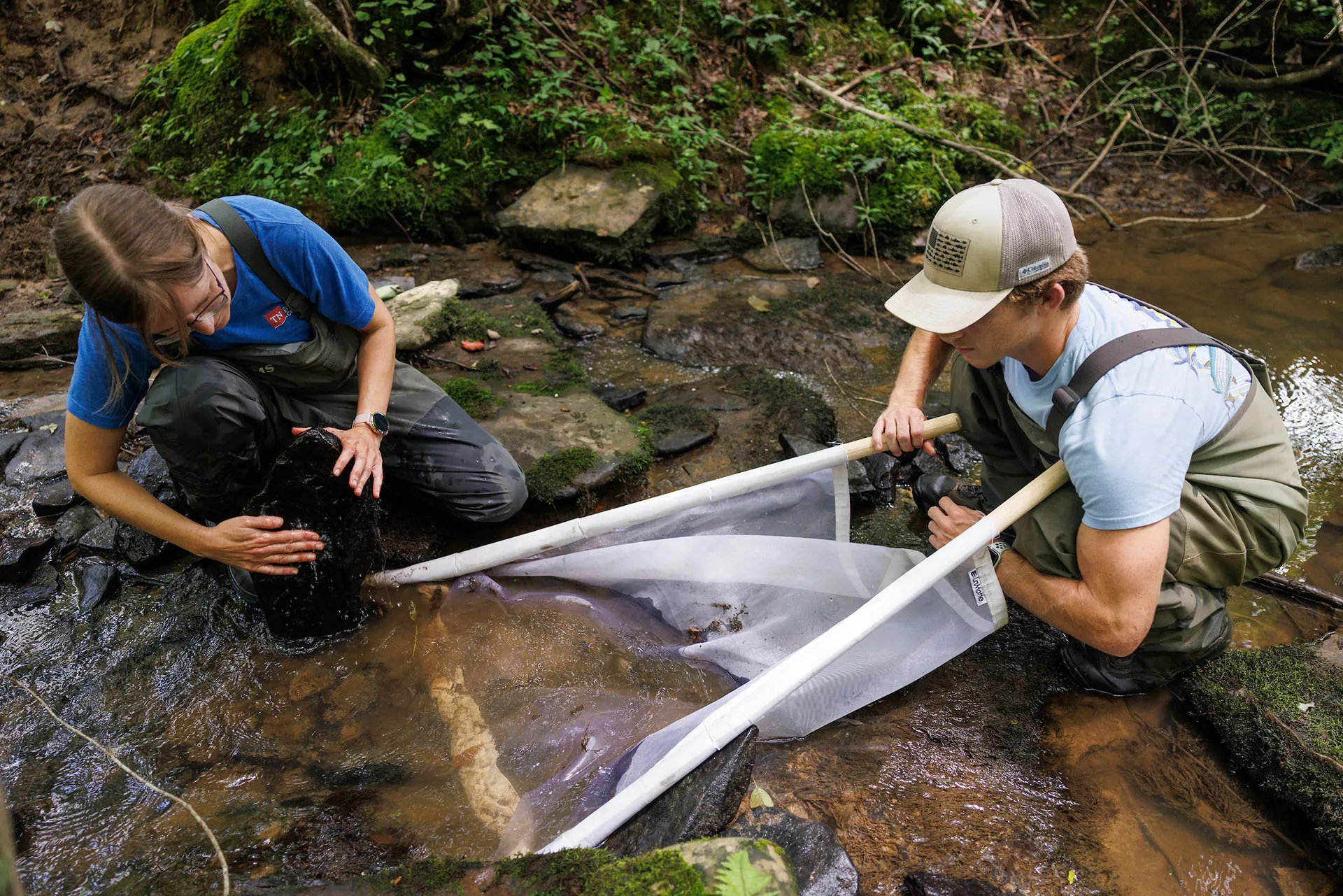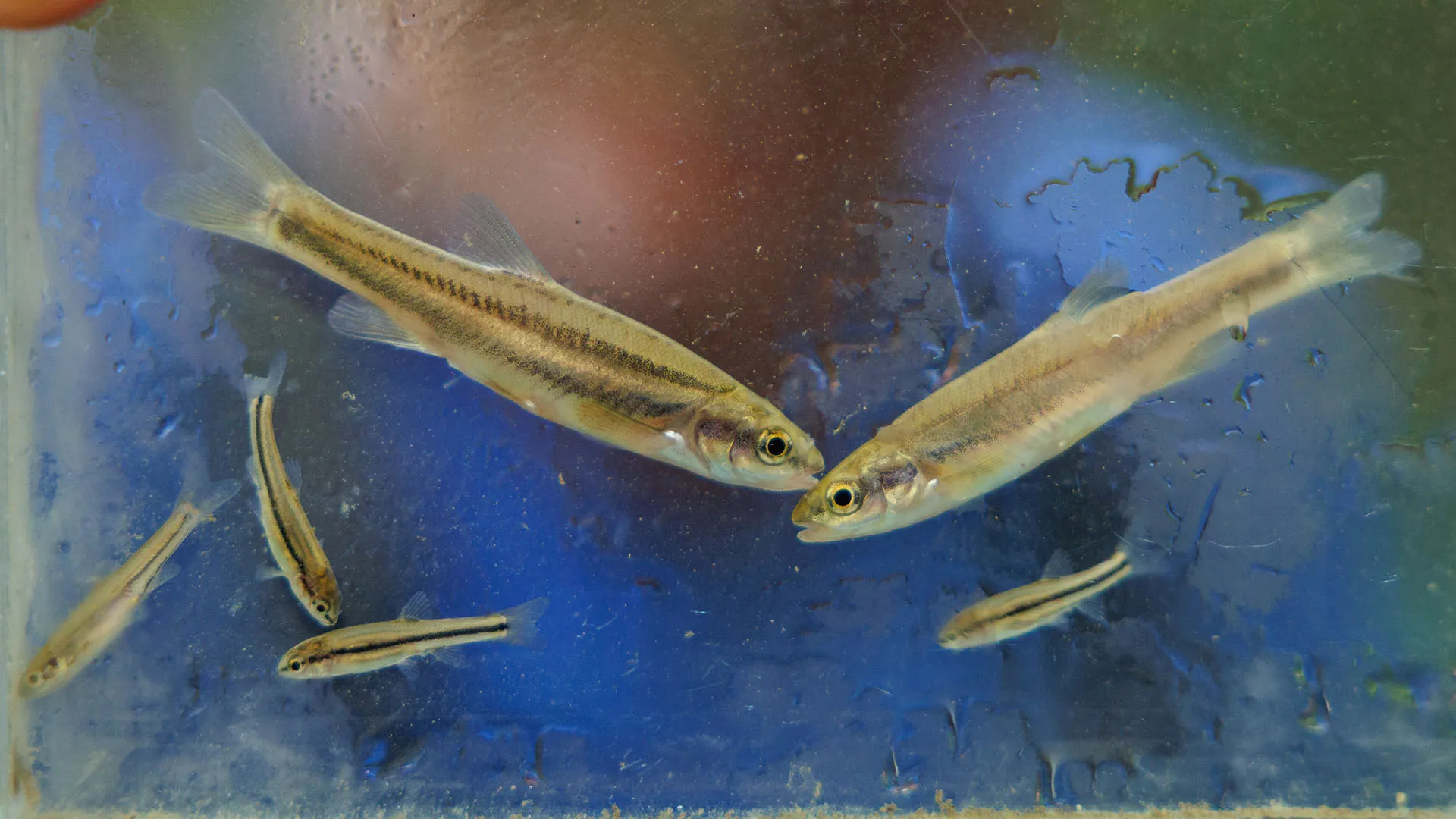Knee-deep in a fast-flowing stream and clad in chest-high waders, a small team of scientists gathered in the clinging summer humidity around a container held aloft. Swimming in a few inches of stream water between two clear acrylic panels, two Laurel Dace – a male and a female – sat nose-to-nose next to several tiny offspring.
The youngsters were young of the year, fish that hatched earlier this spring. Their discovery in Bumbee Creek is welcome news for a species that
scientists consider to be one of the top 10 most-imperiled fish in North America.
In the summer of 2024, a prolonged drought drastically reduced water levels in the two streams atop Walden Ridge north of Chattanooga that were still known to harbor Laurel Dace. That prompted their emergency evacuation by a team of scientists from the Tennessee Aquarium Conservation Institute, the University of Georgia and the U.S. Fish and Wildlife Service.
In March, after spending months in the care of the Aquarium and at a U.S. Fish and Wildlife facility, biologists reintroduced more than 230 Laurel Dace to the wild. However, the future of this critically endangered minnow was still uncertain. The streams on Walden Ridge were flowing again, but the fish’s survival hinged on successfully producing offspring after their reintroduction.
Freshwater scientists at the Conservation Institute hoped that they had released the Laurel Dace early enough ahead of their spawning season that they would reproduce, but they needed confirmation. The discovery of young of the year in Bumbee during this recent trip offers hope for the future of the species


“It just feels wonderful being able to save these fish, put them in human care, wait for the catastrophe — the drought — to be over, wait for water to return to the creek, put them in, and then they did their magical thing just like they’re supposed to do,” says Aquatic Conservation Biologist Dr. Bernie Kuhajda. “It should be a robust and viable population, providing water stays in the creek. So far, so good this year.”
The picture is less rosy for the Laurel Dace population living in nearby Young’s Creek, which was another rescue site during the 2024 droughts. Since the drought ended, no Laurel Dace have been found in this creek, though the search
hasn’t ended.
Fortunately, the Conservation Institute continues to house an assurance (or “ark”) population of fish that helps preserve the Laurel Dace from this creek. That group has produced more than 150 offspring that can be reintroduced into Young’s Creek to help re-establish the Laurel Dace there.
“We’re hopeful that we can continue to keep Laurel Dace up here on Walden Ridge on the Cumberland Plateau, part of our natural heritage,” Kuhajda says.
The visit to Walden Ridge was a water quality sampling trip in partnership with the Tennessee Department of Environment and Conservation’s (TDEC) Division of Water Resources. By measuring and testing water quality across the state, TDEC collects essential data about the viability of rivers and streams as a source of drinking water and habitat for species like the Laurel Dace.
“They not only look at the various aspects of the water itself, but they collect little bugs: macroinvertebrates,” Kuhajda says. “What kind of insects that you get in the stream — under the rocks, in the gravel — can indicate the health of the stream,”
TDEC has also set up several monitoring stations in the Laurel Dace range. Their teams will return every few years to monitor progress as efforts are made to improve water quality in the area.
“It’s great to have them as a partner here up on Walden Ridge in Laurel Dace habitat looking at one more aspect of stream health for these really critically endangered minnows,” Kuhajda says.


On this outing, the team was able to sample in a new location along Young’s Creek in search of Laurel Dace thanks to the generosity of a local landowner.
Community support is crucial to ensuring scientists can monitor as much of a species’ range as possible. Access is central to the preservation of animals like the Laurel Dace and to helping landowners achieve their own goals, says Natural Resources Specialist Drew Hardy.
“We can work together to achieve common goals,” he says. “Everyone cares about the quality of the water that they might be drinking or that their animals might be drinking.”
Through Ridges to Rivers, a Regional Conservation Partnership Program (RCPP), the Conservation Institute assists the U.S. Department of Agriculture’s Natural Resources Conservation Service in evaluating and awarding contracts in six Southeast Tennessee counties to help landowners enact water-friendly improvements on their property. These projects employ best management practices that safeguard local streams while saving landowners money.
Hardy understands that positive interactions and seeing the Aquarium’s scientists sampling fish can help news about programs like the RCPP spread via word of mouth.
“Out here, handshakes matter and faces matter,” Hardy says. “You have to be able to meet people and see them and show them that you are somebody trustworthy and honest and good to work with.”
Though no Laurel Dace were found in Young’s Creek on this outing, Hardy hopes the team can return to the new site in a few months to try again.
